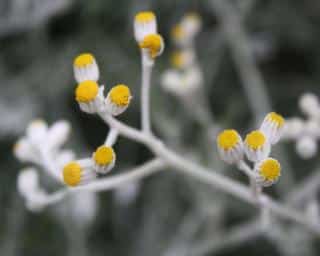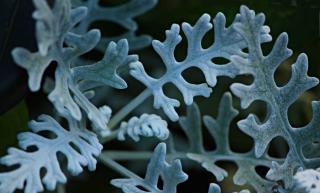

Silver ragwort, sometimes also called maritime ragwort, produces metal-gray colored leaves that are surprisingly attractive.
Silver ragwort facts summary
Name – Cineraria maritima
Family – Asteraceae
Type – perennial
Height – 20 to 24 inches (50 to 60 cm)
Exposure – full sun
Soil – ordinary, well drained
Foliage – evergreen
Flowering – May to July
This is a plant that thrives in rocky ground, marks edges very well, and will provide great ground cover in otherwise colorful flower beds.
Although it wasn’t so common in the past, today it’s making a comeback and has become very trendy.

If you prefer buying it from a horticulture store as a grown seedling, plant it around May-June and keep a distance of about 6 inches (30 cm) between plants.

It helps to water during the first few weeks after planting, but after that, no need to water anymore when your ragwort has settled its roots in the ground.
This perennial with a bushy bearing stands out with its unique silver-colored leafage. It grows in the wild around the Mediterranean ocean and along other coastlines of the world. Over a thousand different species have been numbered.
Thus, some varieties are perennials, some form shrubs and some even grow into silver ragwort vines.
The variety that is most commonly found in our gardens is often used along edges or in flower beds, but you can easily grow the plant in pots or containers on your terrace or deck.
It is quite well suited to growing near the sea, and it is often seen along beaches or ocean-lining cliffs.
> Other garden plants with silvery foliage:
When growing it for leaves, don’t let floral stems develop, snip them off as they appear.